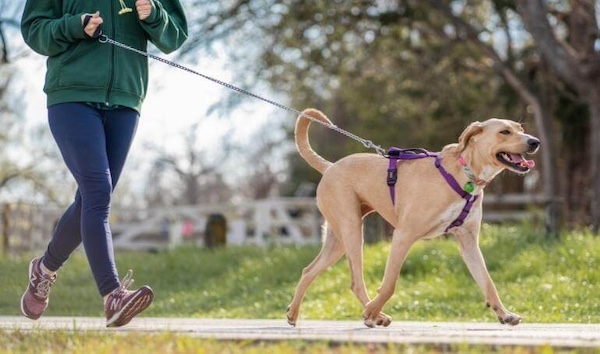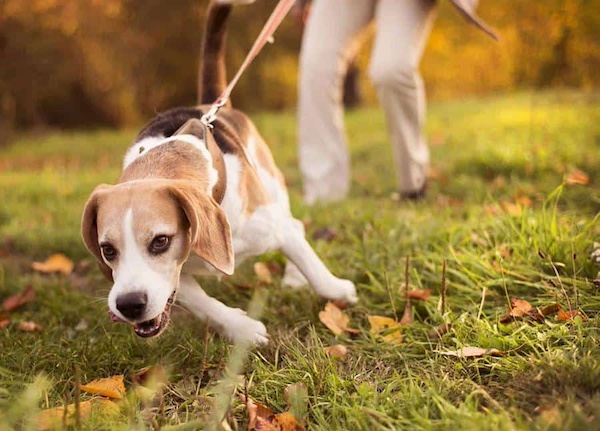Walking your dog should be an enjoyable activity, but leash lunging can make it stressful and even hazardous. Whether your dog is lunging at other dogs, people, or passing vehicles, this behavior can be challenging to manage.
To address leash lunging effectively, it’s essential to understand the reasons behind the behavior and adopt a practical, consistent approach. In this guide, we’ll explore the causes of leash lunging and outline strategies to help you enjoy calmer, more controlled walks with your dog.
Understanding Leash Lunging
Leash lunging occurs when a dog suddenly pulls or jumps forward, often in response to something in their environment. Common triggers include other dogs, small animals, bicycles, or even unfamiliar objects. While the intensity of the lunging may vary, the behavior stems from a combination of emotions, instincts, and environmental factors.
Many dogs lunge because they are overly excited or frustrated. They see something they want to interact with and are unable to reach it because of the leash. For others, leash lunging may be a defensive behavior triggered by fear or anxiety.
A dog that feels threatened might lunge to create distance between themselves and the perceived danger. Additionally, leash tension often contributes to the problem; when a dog feels restrained, their frustration or stress may increase, intensifying the behavior.
Identifying the Root Cause
Before tackling leash lunging, it’s important to identify why your dog is behaving this way. Observe their body language and behavior during walks to determine if they are reacting out of excitement, fear, or frustration.
For example, an excited dog may wag their tail, vocalize, and maintain a forward posture, while a fearful dog might show signs such as a tucked tail or avoidance of eye contact.
Noting when and where the lunging occurs can also help. Does your dog lunge only at certain triggers, such as passing bicycles, or does it happen in crowded environments? Understanding these patterns provides a clearer picture of the root cause and allows you to tailor your training efforts.
Prevention Strategies

Preventing leash lunging begins with setting your dog up for success. The right tools and a strategic approach can make a significant difference. Equipment like harnesses can give you better control without causing discomfort or injury. In open, safe areas, using a long lead can reduce the frustration of leash restriction while allowing your dog more freedom to explore.
Creating an environment conducive to learning is also crucial. Start your training in calm, low-distraction settings where your dog can focus.
Gradually increase the complexity of the environment as they progress. For example, practice leash manners in your backyard or a quiet park before introducing them to busier streets.
Training Techniques to Address Leash Lunging
Once you’ve identified your dog’s triggers, consistent training is key to improving their behavior. Impulse control exercises are an excellent foundation. Teaching commands like “off” or “leave it” can redirect your dog’s attention away from triggers and toward you. For instance, when your dog notices something that might provoke lunging, ask them to leave it and reward them for maintaining focus on you.
Desensitization and counterconditioning are effective techniques for reducing reactivity. Gradually expose your dog to their triggers at a distance where they remain calm. Pair this exposure with treats or praise to create positive associations.
Over time, decrease the distance to the trigger while ensuring your dog remains relaxed and focused.
If your dog begins to lunge, the “turn and go” method can be a valuable tool. Calmly turn and walk in the opposite direction to redirect their attention and prevent them from reinforcing the unwanted behavior. Praise and reward your dog for following you and calming down.
Reinforcing Good Behavior
Consistency and positive reinforcement are vital to achieving long-term success. Reward your dog for calm walking behavior, especially in situations where they might typically lunge. High-value treats or their favorite toy can make positive behavior more rewarding than lunging.
Practicing in various environments is equally important. Dogs often struggle to generalize learned behaviors, so it’s essential to expose them to a range of settings. Begin with moderately distracting environments and progress to more challenging ones, such as crowded parks or urban streets.
Finally, ensure that everyone who handles your dog uses the same training methods and commands. Consistency across handlers helps reinforce the desired behaviors and prevents confusion.
Conclusion
Leash lunging can be a frustrating and challenging behavior to address, but with patience and the right approach, it’s possible to make significant progress.
By understanding the causes of leash lunging, using prevention strategies, and employing consistent training techniques, you can transform your walks into enjoyable experiences for both you and your dog.
Remember, progress takes time, and setbacks are a normal part of the process. Stay consistent, remain patient, and celebrate small victories along the way. With dedication and positive reinforcement, your dog will learn to walk calmly on the leash, strengthening your bond and making every outing a pleasure.





